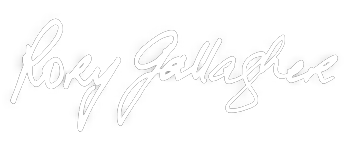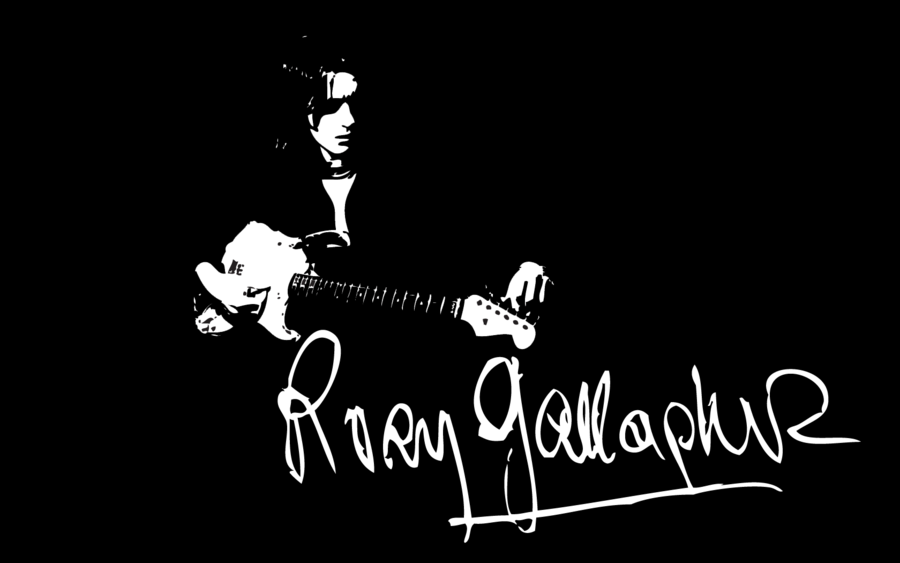
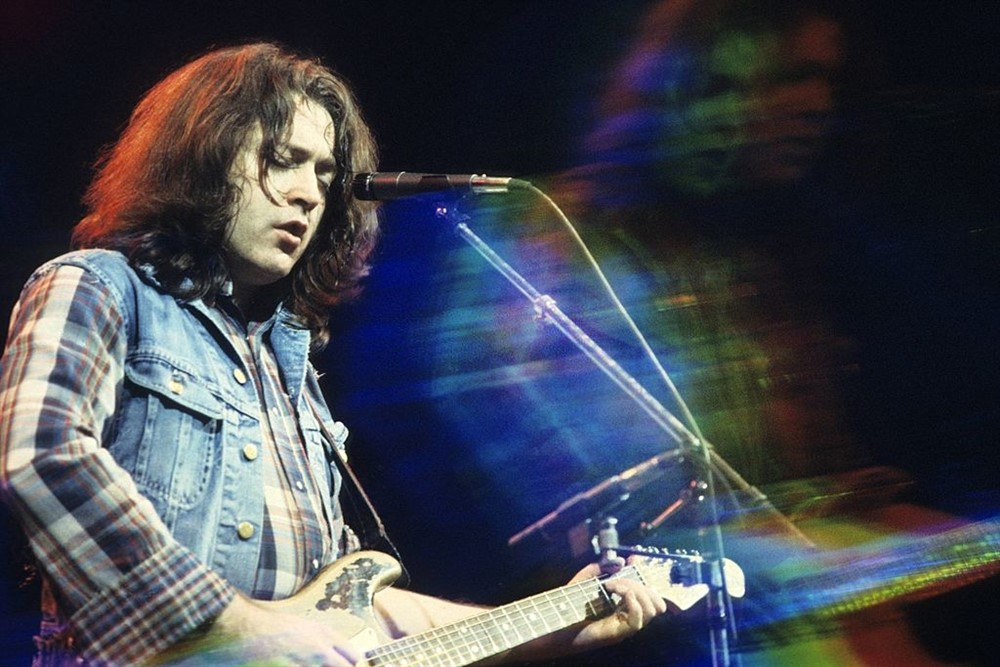
William Rory Gallagher March 2, 1948 – June 14 1995) was an Irish Blues and Rock guitarist, singer and songwriter. He formed the Blues rock power trio Taste in 1966, which experienced some moderate success in the UK.
He also found success with a solo career releasing music throughout the 1970s and 1980s and selling more than 30 million records worldwide.
Rory Gallagher is known for his virtuosic style of guitar playing, which strongly influenced other guitarists such as Brian May and Eric Clapton. But, due to his lack of commercial success, he is often referred as "the greatest guitarist you've never heard of". Rory Gallagher was voted as guitarist of the year by Melody Maker magazine in 1972, and listed as the 57th greatest guitarist of all time by Rolling Stone magazine.
Rory Gallagher was born in Ballyshannon, County Donegal, and raised in Cork, Munster. His popularity had declined throughout the 1980s due to changes within the music industry and poor health. Rory received a liver transplant in 1995, but died of Pneumonia later that same year in London at the age of 47.
Taste
Taste are an Irish Blues rock band formed in Cork in 1966. They were founded by songwriter and guitarist Rory Gallagher who left the band in 1970.
Taste (originally "The Taste") was formed in Cork, Ireland, in August 1966 as a trio consisting of Rory Gallagher on guitars and vocals, Eric Kitteringham on bass, and Norman Damery on drums. In their early years Taste toured in Hamburg and Ireland before becoming regulars at Maritime Hotel, an R&B club in Belfast, Northern Ireland, in the summer of 1967.
In 1968 Taste began performing in the UK where the original lineup split up. The new lineup formed with Richard McCracken on bass and John Wilson on drums. The new Taste moved permanently to London where they signed with the Polydor Records. In November 1968, the band, along with Yes, opened at Cream's farewell concerts. While with Polydor,
Taste began touring the United States and Canada with the British supergroup Blind Faith. In April 1969, Taste released the first of their two studio albums, the self-titled Taste, with On the Boards following in early 1970, the latter showing the band's Jazz influences with Rory Gallagher playing saxophone on numerous tracks.
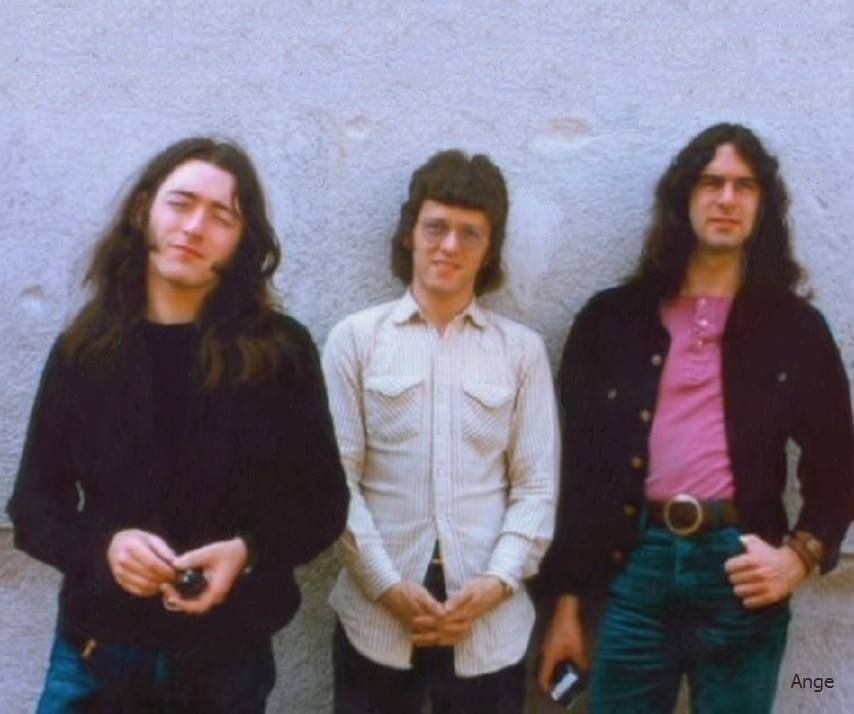
They performed at the Isle of Wight Festival 1970, alongside Jimi Hendrix and The Who. According to Donal Gallagher (Rory's brother who managed the band) filmmaker Murray Lerner had instructed his crew to shoot just two numbers from the new bands and to save the main film stock for Jimi Hendrix, The Who, Leonard Cohen and the other headliners, but Taste's performance prompted him to change his instructions: "Murray didn't know who Taste were but when he saw the spontaneity of the band and the audience and their interaction, he just told his guys keep filming and they just kept going and captured over an hour of the performance which was quite incredible." In the song "Sugar Mama", a photographer can be seen hurriedly bringing his camera up from a re-load to cover another camera angle.
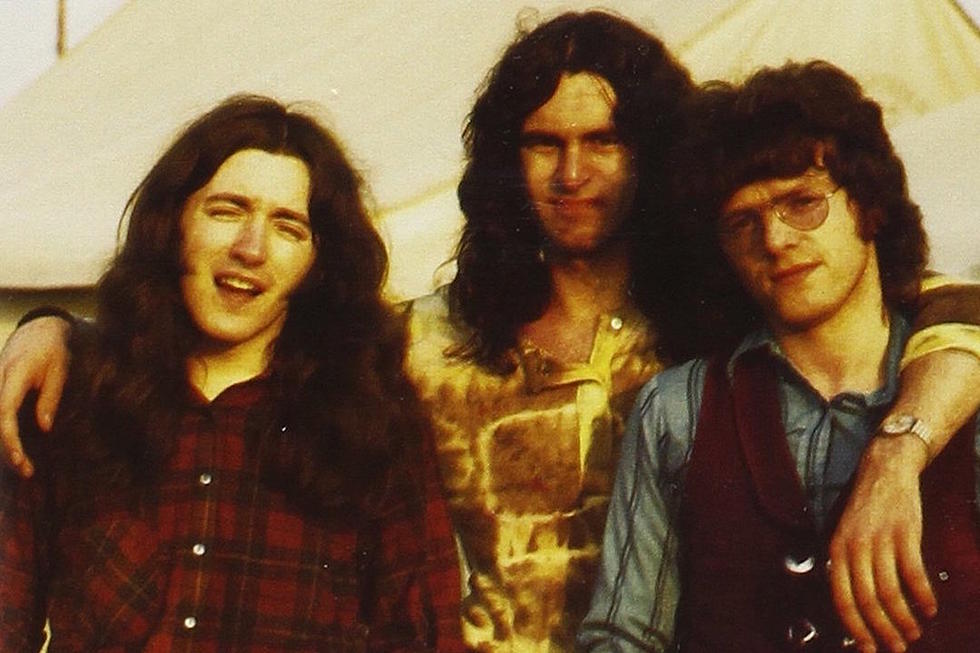
Later in 1970 Taste toured Europe, then disbanded for numerous reasons, the details of which are still unclear, but are generally acknowledged as being related to managerial disputes, and tensions between Rory and the rest of the band, who wanted to be recognised as equals with him (Rory having been the sole songwriter in the band). They performed their last show on New Year's Eve in Belfast. John Wilson and Richard McCracken immediately formed 'Stud' in early 1971, with Jim Cregan and John Weider, while Rory Gallagher went on to pursue a solo career. Some years after the break-up, recordings of the original line-up emerged.
A musical homage to Taste and Gallagher was made by Black 47 in their song "Rory", released on 1998's Green Suede Shoes album.
In 1996, Richard McCracken and John Wilson reformed the band with guitarist/vocalist Sam Davidson taking over Rory Gallagher's role as frontman, with Albert Mills replacing Richard McCracken in 2010. The band continued in this formation until February 2017, when it was revealed that the band would tour under the name "Little Taste of Rory feat. John Wilson",
and that the line-up now consisted of John Wilson, Sam Davidson, and new bassist Alan Niblock. In 2018 John Wilson retired from the band due to ill health but Sam Davidson continues to perform as "Sam Davidson's TASTE" with Albert Mills back on bass and Lyn McMullan taking over from John Wilson on drums.
Early life
Rory Gallagher was born in Ballyshannon, County Donegal in 1948. His father Daniel was employed by the Irish Electricity Supply Board, who were constructing a hydro-electric power plant on the Erne River above the town. The family moved, first to Derry City, where his younger brother Dónal was born in 1949. His mother, Monica, and the two boys then moved to Cork, where the brothers were raised. Rory attended North Monastery School. Daniel Gallagher had played the accordion and sang with the Tír Chonaill Céilí Band whilst in Donegal; their mother Monica was a singer and acted with the Abbey Players in Ballyshannon.
The Theatre in Ballyshannon where Monica once acted is now called the Rory Gallagher Theatre. Both sons were musically inclined and encouraged by their parents. At the age of nine, Rory Gallagher received his first guitar from them. He built on his burgeoning ability on ukulele in teaching himself to play the guitar and perform at minor functions. After winning a talent contest when he was twelve, he bought his next guitar.
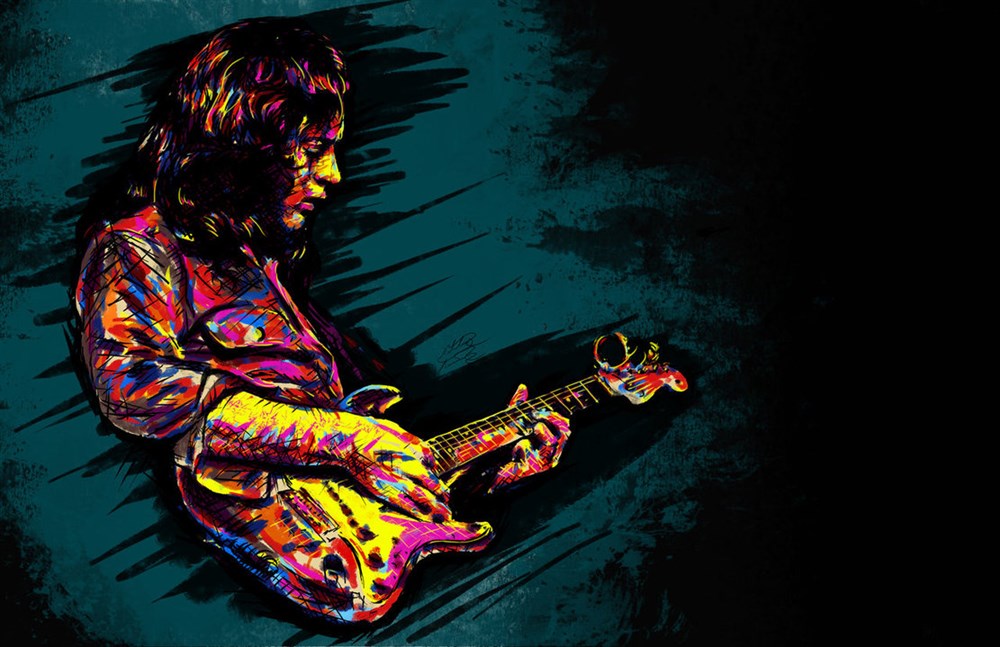
Rory Gallagher began performing in his adolescence with both his acoustic guitar, and an electric guitar he bought with his prize money. However, it was his purchase three years later of a 1961 Fender Stratocaster for that became his primary instrument and most associated with him for the span of his lifetime.
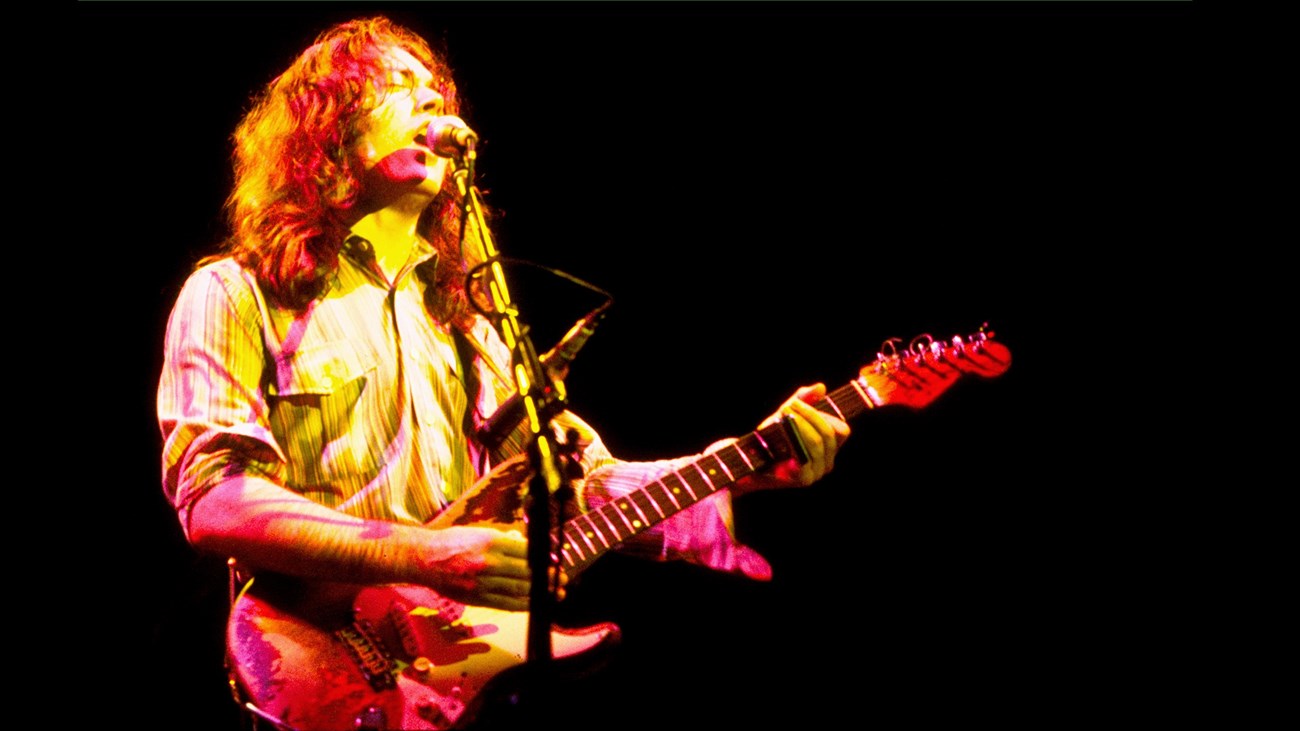
Rory Gallagher was initially attracted to skiffle after hearing Lonnie Donegan on the radio. Lonnie Donegan frequently covered Blues and Folk performers from the United States. He relied entirely on radio programs and television. Occasionally, the BBC would play some blues numbers, and he slowly found some song books for guitar, where he found the names of the actual composers of blues pieces. While still in school, playing songs by Buddy Holly and Eddie Cochran, he discovered his greatest influence in Muddy Waters.
He began experimenting with Folk, Blues, and Rock music. Unable to find or afford to record albums, Rory Gallagher stayed up late to hear Radio Luxembourg and AFN where the radio brought him his only exposure to the actual songwriters and musicians whose music moved him most. Influences he discovered, and cited as he progressed, included Woody Guthrie, Big Bill Broonzy, and Lead Belly. Initially, Rory Gallagher struck out after just an acoustic sound. Singing and later using a brace for his harmonica, Rory taught himself to play slide guitar.
Further, throughout the next few years of his musical development, he began learning to play alto saxophone, bass, mandolin, banjo, and the coral sitar with varying degrees of proficiency. By his mid-teens, he began experimenting heavily with different blues styles.
Rory Gallagher began playing after school with Irish showbands, while still a young teenager. In 1963, he joined one named, Fontana, a sextet playing the popular hit songs of the day. The band toured Ireland and the United Kingdom, earning the money for the payments that were due on his Stratocaster guitar.
Rory Gallagher began to influence the band's repertoire, beginning its transition from mainstream pop music, skirting along some of Chuck Berry's songs and by 1965, he had successfully moulded Fontana into "The Impact", with a change in their line-up into an R&B group that played gigs in Ireland and Spain until disbanding in London.
Rory Gallagher left with the bassist Oliver Tobin and drummer Johnny Campbell to perform as a trio in Hamburg, Germany. In 1966, Rory returned to Ireland and, experimenting with other musicians back home in Cork, decided to form his own band.
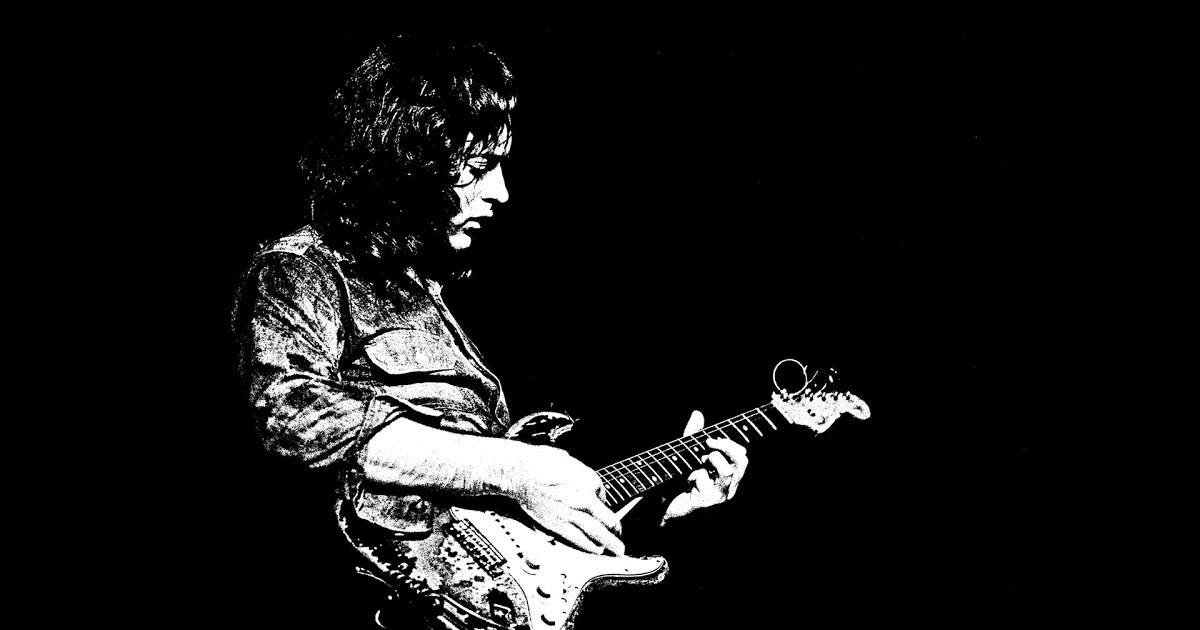
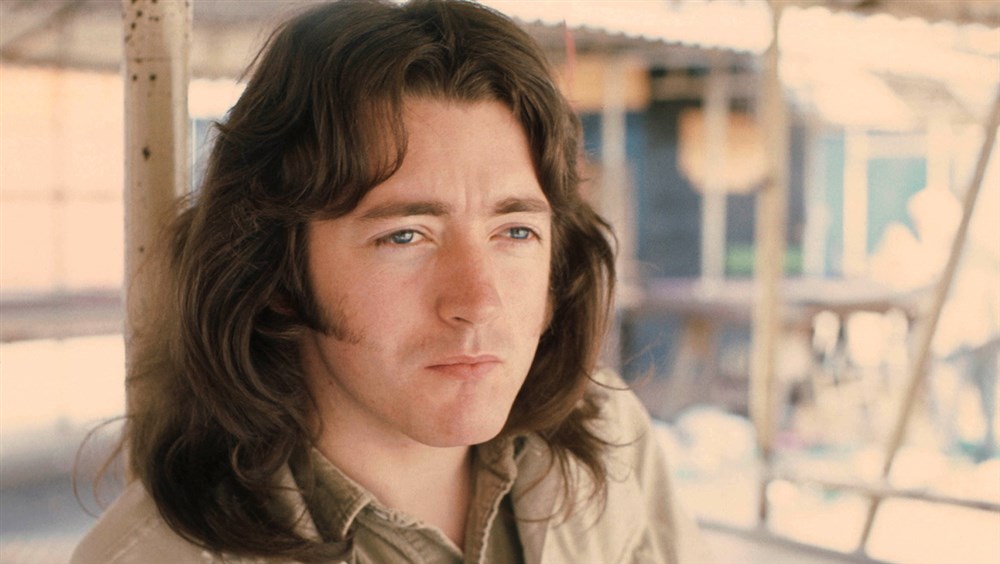
Solo career
After the break-up of Taste, Rory Gallagher toured under his own name, hiring former Deep Joy bass player Gerry McAvoy to play on his self-titled debut album, Rory Gallagher.
It was the beginning of a twenty-year musical relationship between Rory Gallagher and Gerry McAvoy; the other band member was drummer Wilgar Campbell.
The 1970s were Rory Gallagher's most prolific period. He produced ten albums in that decade, including two live albums, Live in Europe and Irish Tour '74. November 1971 saw the release of the album Deuce. In the same year he was voted Melody Maker's International Top Guitarist of the Year, ahead of Eric Clapton. However, despite a number of his albums from this period reaching the UK Albums Chart, Rory Gallagher did not attain major star status.
Rory Gallagher played and recorded what he said was "in me all the time, and not just something I turn on ...". Though he sold over thirty million albums worldwide, it was his marathon live performances that won him greatest acclaim. He is documented in Irish Tour '74, a film directed by Tony Palmer.
During the heightened periods of political unrest in Northern Ireland, as other artists were warned not to tour, Rory Gallagher was resolute about touring Ireland at least once a year during his career, winning him the dedication of thousands of fans, and in the process, becoming a role model for other aspiring young Irish musicians.
He himself admitted in several interviews that at first there were not any international Irish acts until Van Morrison, Rory Gallagher, and later, Phil Lynott and Thin Lizzy grew popular during the 1970s. The line-up which included Rod de'Ath on drums and Lou Martin on keyboards, performed together between 1973 and 1976. However, he eventually dropped down to just bass, guitar and drums, and his act became a power trio. Other releases from that period include Against the Grain, Calling Card, Photo-Finish, and Top Priority.
In January 1975, when the Rolling Stones gathered in Rotterdam, Netherlands, to continue working towards their album Black and Blue they auditioned new guitarists, to replace Mick Taylor, as they recorded. Rory Gallagher went over for a jam with the band "just to see what was going on," but did not join the group, happy with his solo career.
Gerry McAvoy has stated that the Gallagher band performed several TV and radio shows across Europe, including Beat-Club in Bremen Germany, and the Old Grey Whistle Test. He recorded two "Peel Sessions" (both February 1973 and containing the same tracks), but only the first was broadcast. Along with Little Feat and Roger McGuinn, Rory Gallagher performed the first Rockpalast live concert at the Grugahalle, Essen, Germany in 1977.
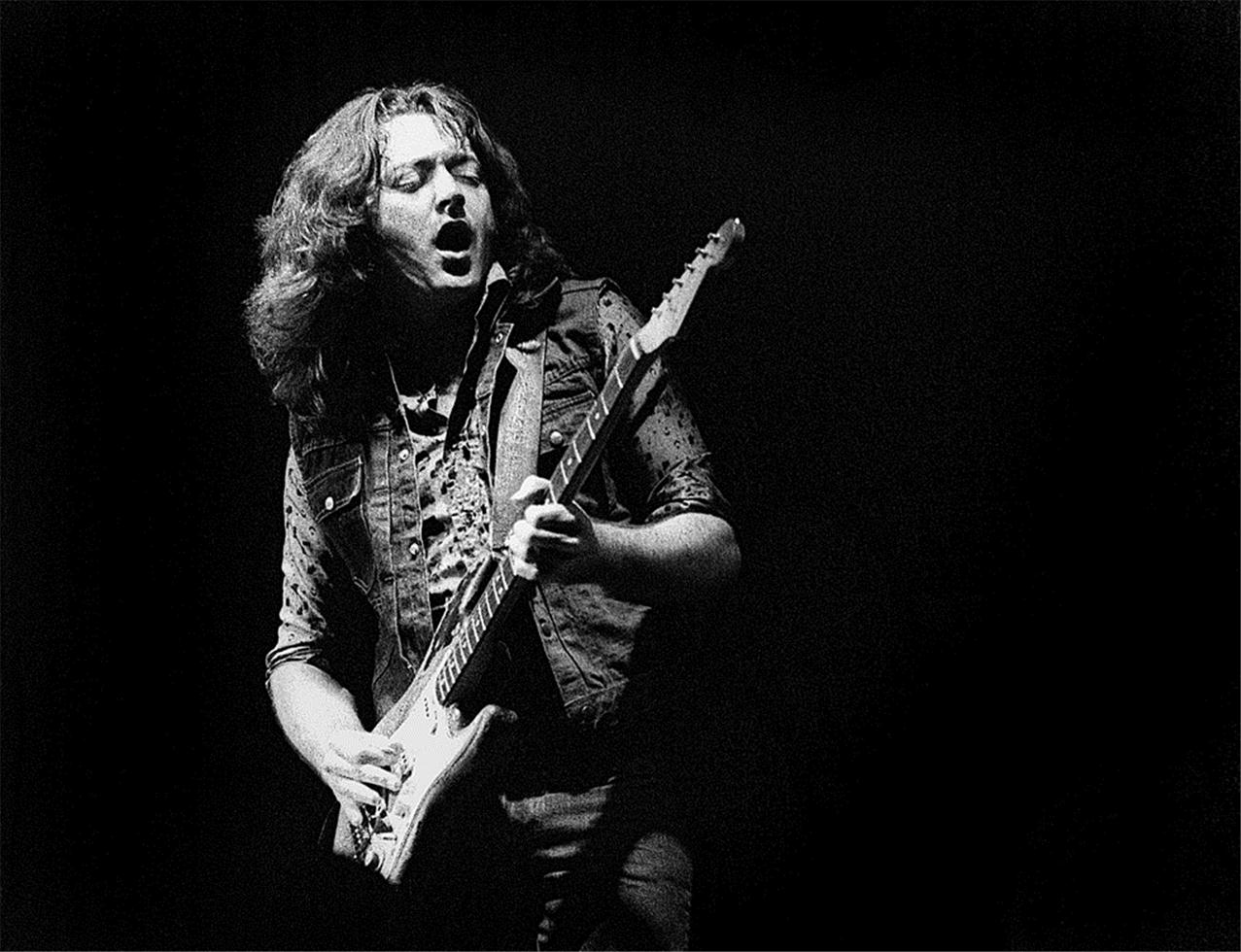

Rory Gallagher collaborated with Jerry Lee Lewis and Muddy Waters on their respective London Sessions in the mid-1970s. He played on Lonnie Donegan's final album. He was David Coverdale's second choice (after Jeff Beck) to replace Ritchie Blackmore in Deep Purple. Rory chose to perform in his own band.
In the 1980s he continued recording, producing Jinx, Defender, and Fresh Evidence. After Fresh Evidence, he embarked on a tour of the United States. In addition he played with Box of Frogs, a band formed in 1983 by former members of The Yardbirds. Becoming obsessive over details and plagued by self-doubt, Rory Gallagher nevertheless retained a loyal fanbase.
During this period he stated "I agonize too much".
Notes From San Francisco, an album of unreleased studio tracks and a San Francisco 1979 concert, was released in May 2011.
Guitars and equipment Rory's Stratocaster
He was always associated with his well-worn sunburst 1961 Stratocaster (Serial Number 64351).
Rory bought this guitar for £ 100 in 1963 on credit from the owner of Crowley's Music Store in Cork, Michael Crowley. According to legend, this was the first Stratocaster to reach Ireland.
The story of how Rory got his Fender Stratocaster from 1961 is somewhat interesting in itself. The previous owner of the guitar was Jim Conlon, who is known as the founder and guitarist of an Irish band called 'Royal Showband'. Jim is said to have ordered a red stratocaster from the US, but this Sunburst replaced it, so he had to use the guitar for about half a year until the red would arrive. After the Red Strat finally arrived in Ireland, the Sunburst was offered for sale in the Michael Crowley store, who finally met Rory and agreed to sell the guitar to him.
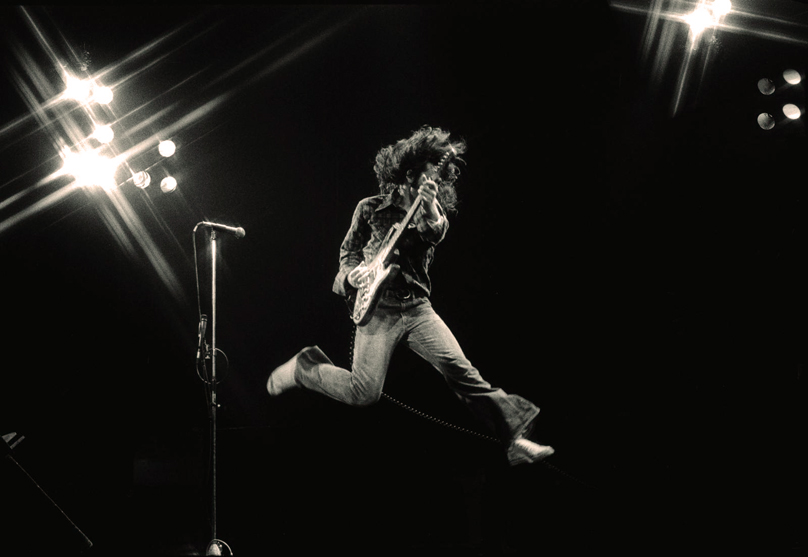
Speaking about Rory Gallagher's purchase of the famous Stratocaster his brother Dónal recalled:
"His dream ambition was to have a guitar like Buddy Holly... This Stratocaster was in the store as a used instrument, it was 100 pounds... in today's money you couldn't even compare you might as well say it was a million pounds... my mother was saying we'll be in debt for the rest of our lives and Rory said well actually with a guitar like this I can play both parts, rhythm and lead, we won't need a rhythm player so I can earn more money and pay it off so the Stratocaster became his partner for life if you like."
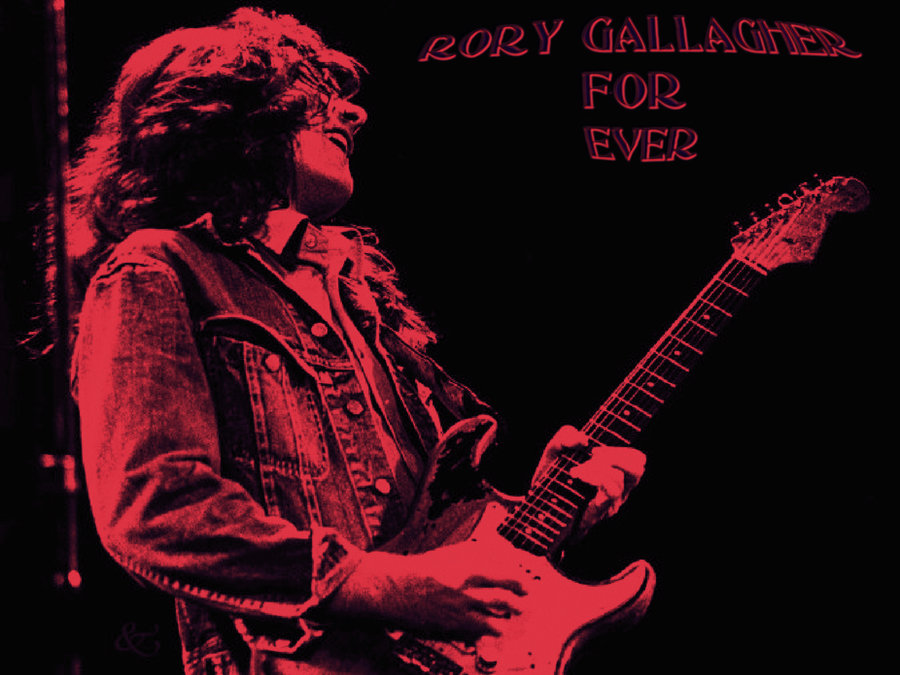
The guitar was extensively modified by Rory. The tuning pegs and the nut were replaced, (5 Sperzel pegs and one Gotoh), and all of these have been found to be replacements. Second, it is thought that the nut has been replaced and interchanged a number of times. Third, the pickguard was changed during Rory Gallagher's time with Taste. Only the middle pick-up is original. The final modification was that of the wiring: Rory Gallagher disconnected the bottom tone pot and rewired it so he had just a master tone control along with the master volume control. He installed a 5-way selector switch in place of the vintage 3-way one.
Most of the paint was removed from the guitar at some unknown date in 1967 or 1968 during the Taste period, as evidenced by photographs from the time. No further paint loss was seen over the subsequent twenty five years of use. Although the Strat was left abandoned in a rainy ditch for days after being stolen from the back of a tour-van in Dublin, this is not believed to have caused any ill effect.
The paint removal and appearance of extensive road wear was in keeping with Rory Gallaghers public person and image. A borrowed Telecaster was also stolen at the same time but never recovered. When the Strat was recovered after two weeks, Gallagher swore he would never sell it or paint it after that.
It also had a period of time of having a replacement neck, with the original neck bowing due to the amount of moisture it absorbed during continuous touring. The neck was taken off and left to settle, and was eventually reunited with the Strat after returning to its correct shape. Other quirks include a 'hump' in the scratch plate which moves the neck pick-up closer to the neck on the bass side, and a replacement of all of the pick-ups, though this replacement was due to damage rather than the perception of a tonal inadequacy.
One final point of interest is that one of the clay double-dot inlays at the 12th fret fell out and was replaced with a plastic one, which is why it is whiter than the other clay inlays. On 21 and 22 October 2011, Rory's brother Dónal brought the guitar out of retirement to allow Joe Bonamassa to perform with it on his two nights at the London Hammersmith Apollo. Joe Bonamassa opened both night's performances with his rendition of "Cradle Rock" using Rory Gallagher's Stratocaster. Photos and video of the performance can be seen on the official Rory Gallagher website.
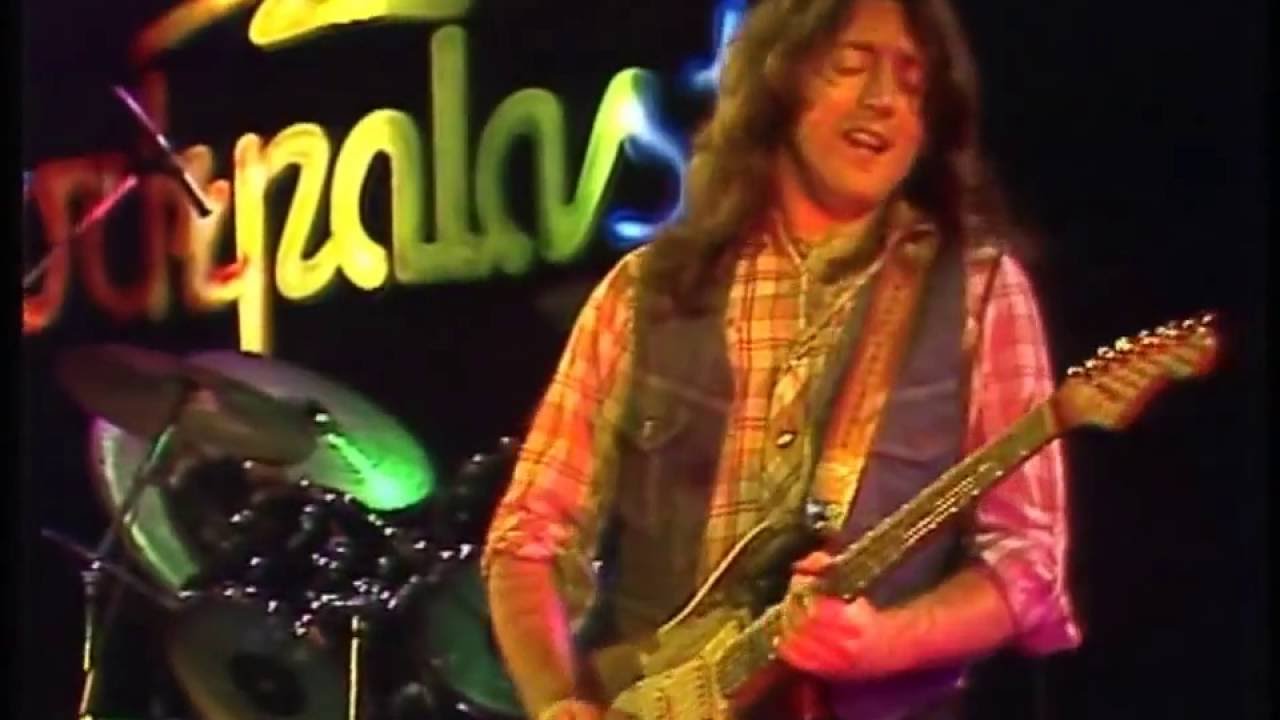
Patrick Eggle 'JS Berlin Legend' electric guitar
Though known for his Stratocaster, Rory Gallagher also used a number of other guitars, including acoustic examples, during his career.
In April 2014 one of the last guitars owned by Rory Gallagher, a Patrick Eggle 'JS Berlin Legend' was put up for auction in Cumbria, England. Custom built for Rory Gallagher, the guitar was placed for auction by one of his close friends to whom it was given after his death. On 11 April it was sold for £25,000.
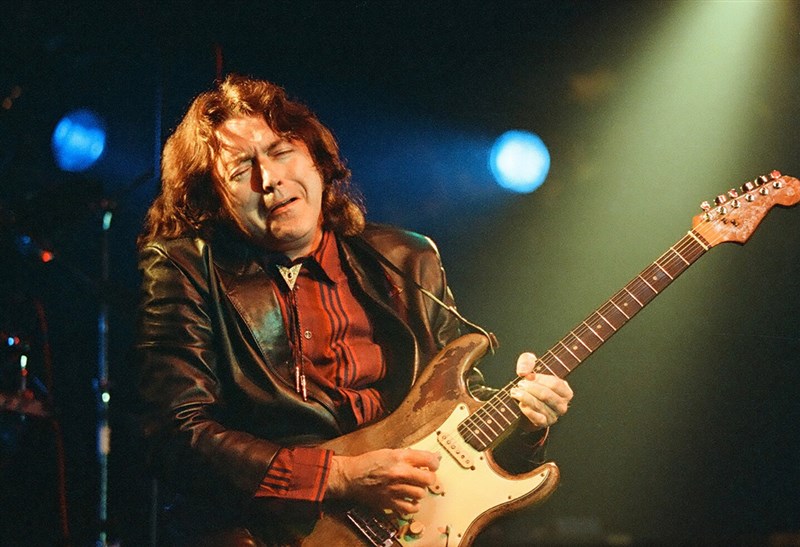
Amplifiers and effects
Rory Gallagher used various makes and models of amplifiers during his career. In general, however, he preferred smaller 'combo' amplifiers to the larger, more powerful 'stacks' popular with Rock and Hard rock guitarists. To make up for the relative lack of power on stage, he would often link several different combo amps together.
When Rory Gallagher was with Taste, he used a single Vox AC30 with a Dallas Rangemaster treble booster plugged into the 'normal' input. Examples of this sound can be heard on the Taste albums, as well as the album Live in Europe.
Brian May, of the band Queen, has admitted in interviews that as a young man, he was inspired to use a Vox AC30 and treble booster setup after meeting Rory Gallagher and asking him how he got his sound. Rory Gallagher also used Ibanez Tube Screamers, an MXR Dyna Comp, and various Boss effects, often using a Flanger and Octaver.
In the mid to late 1970s, when Rory Gallagher was moving towards a hard rock sound, he experimented with Ampeg VT40 and VT22 amps. He also began using Marshall combos. During this period and beyond, Rory Gallagher used different combinations of amps on stage to achieve more power and to blend the tonal characteristics of different amps including Orange amplification.
On the introduction of the Boss ME-5 all-in-one floor based effects unit, Rory was known to have been an early adopter and used it readily for his live work up until his death in the mid-1990s.
Although he wasn't that well known for his use of various German amplifiers, he used Stramp 2100a amplifiers, which can be seen in his appearances on the German Beat Club program. Another company that built amplifiers for Rory Gallagher was PCL Vintage Amp.
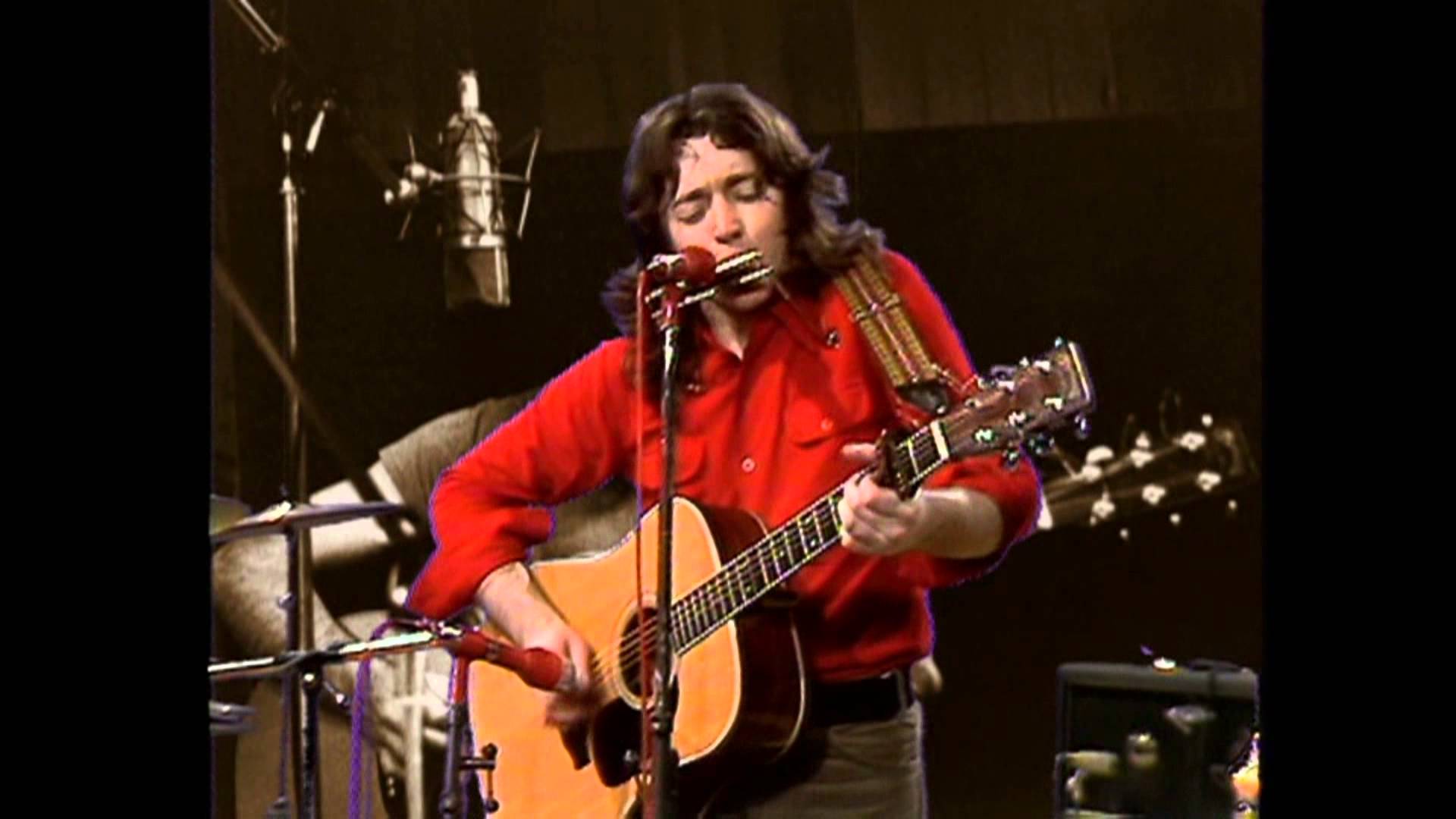
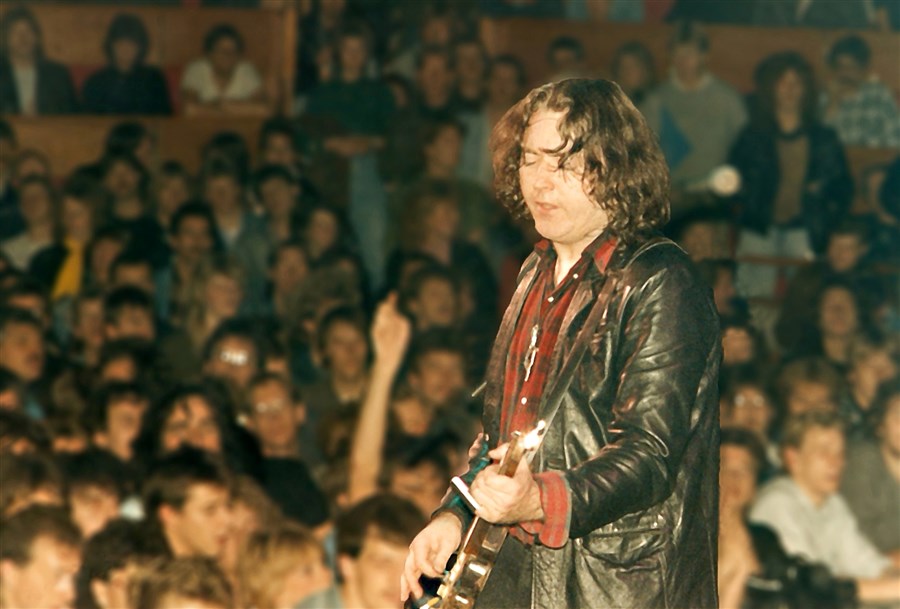
Death
In the later years of his life Rory developed a phobia of flying. To overcome this he received a prescription for a powerful sedative. This medication, combined with his alcohol use resulted in severe liver damage. Despite this he continued touring. By the time of his final performance on 10 January 1995 in the Netherlands, he was visibly ill and the tour had to be cancelled. He was prescribed paracetamol for the pain, a drug that can be extremely harmful to the liver, especially for a heavy drinker such as Rory Gallagher.
Rory Gallagher was admitted to King's College Hospital in London in March 1995, and it was only then that the extent of his ill-health became apparent: his liver was failing and the doctors determined that in spite of his young age a liver transplant was the only possible course of action. After 13 weeks in intensive care, while waiting to be transferred to a convalescent home, his health suddenly worsened when he contracted a staphylococcal (MRSA) infection, and he died on 14 June 1995, at the age of 47. He was unmarried and had no children.
Rory Gallagher was buried in St Oliver's Cemetery, on the Clash Road just outside Ballincollig near Cork City, Ireland. His headstone is a replica of an award he received in 1972 for International Guitarist of the Year.
Legacy
In 2003, Wheels Within Wheels, a collection of acoustic tracks, was released posthumously by Gallagher's brother Donal Gallagher. Collaborators on this album included Bert Jansch, Martin Carthy, The Dubliners, Spanish Flamenco guitarist Juan Martin and Lonnie Donegan. Many modern day musicians, including The Edge from U2, Slash of Guns N' Roses, Johnny Marr of the Smiths, Davy Knowles, Janick Gers of Iron Maiden, James Dean Bradfield of Manic Street Preachers, Glenn Tipton of Judas Priest, Vivian Campbell of Def Leppard, Gary Moore, Joe Bonamassa, cite Rory Gallagher as an inspiration in their formative musical years.
Brian May, lead guitarist of Queen, relates: "so these couple of kids come up, who's me and my mate, and say 'How do you get your sound Mr. Gallagher?'" and he sits and tells us. So I owe Rory Gallagher my sound." In 2010, Rory Gallagher was ranked No. 42 on Gibson.com's List of their Top 50 Guitarists of All Time. Rory Gallagher was also listed on Rolling Stone magazine's list of the 100 Greatest Guitarists of All Time, ranked at 57th place.

In April 2014, at the time of the auction of Rory Gallagher's Patrick Eggle 'JS Berlin Legend' guitar, the BBC noted: "Eric Clapton credited him with ‘getting me back into the Blues’. The Rolling Stones wanted him to replace Mick Taylor and when Jimi Hendrix was asked how it felt to be the world's greatest guitarist, he is reported to have said: "I don't know, go ask Rory Gallagher." (but this may be a variant of an urban legend).
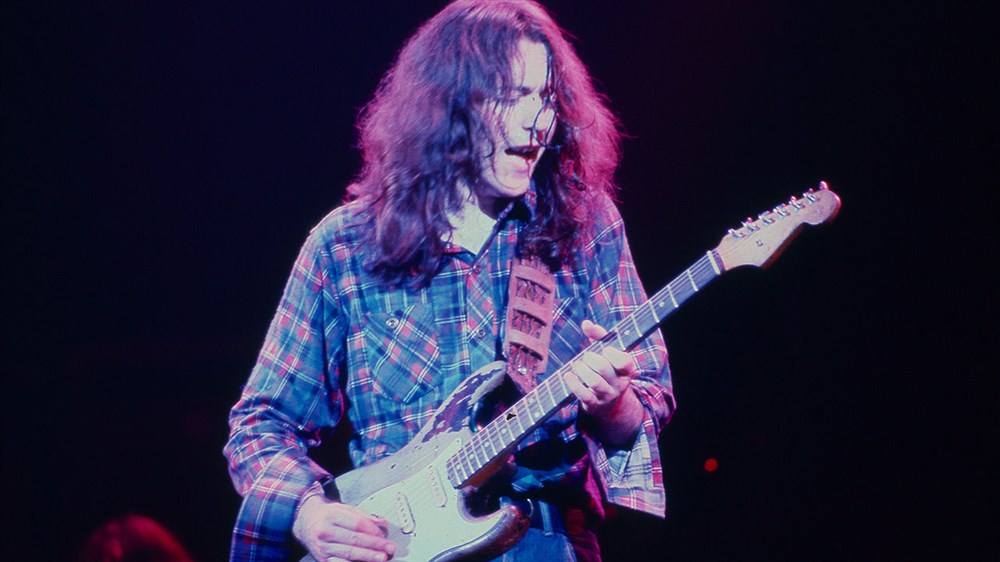
Tributes
On 25 October 1997 a tribute sculpture to Gallagher was unveiled in the newly renamed Rory Gallagher Place (formerly St. Paul's St. Square) in his hometown of Cork. The sculptor, Geraldine Creedon, was a childhood friend of Gallagher. The band who played at the unveiling of the statue was the Dave McHugh band, who formed Ireland's first tribute to Gallagher, "Aftertaste", in 1995.
Rory Gallagher Corner at Meeting House Square, Temple Bar, Dublin, where a life-size bronze statue in the shape of his Stratocaster has been installed. Some of those who attended the unveiling include The Edge of U2 and the Lord Mayor of Dublin. In 2004 the Rory Gallagher Music Library was opened in Cork. In 2006 a plaque was unveiled at the Ulster Hall in Belfast. A street in Ris-Orangis, a commune in the southern suburbs of Paris, was renamed Rue Rory Gallagher.
New York City-based Celtic rock band Black 47 paid tribute to Rory Gallagher on their 1996 major-label release, "Green Suede Shoes". The track titled "Rory" features vocalist/guitarist Larry Kirwan delivering a passionate and heart-felt tribute to Rory Gallagher's talent and unrealised stardom.
Flynn Amps manufacture a Rory Gallagher signature Hawk pedal, cloned from Rory's 1970s pedal.
Christy Moore released a song on his 2009 album Listen titled 'Rory is Gone', which pays tribute to Rory's life.
On 2 June 2010, a life-sized bronze statue of Rory Gallagher was unveiled in the town centre of Ballyshannon. An award-winning annual blues festival is held in his honour at the same location.

In 2015 Fender produced the Rory Gallagher Signature Stratocaster.
In October 2016 approval was given to put up a statue of Rory Gallagher on Bedford Street, near Ulster Hall in Belfast.
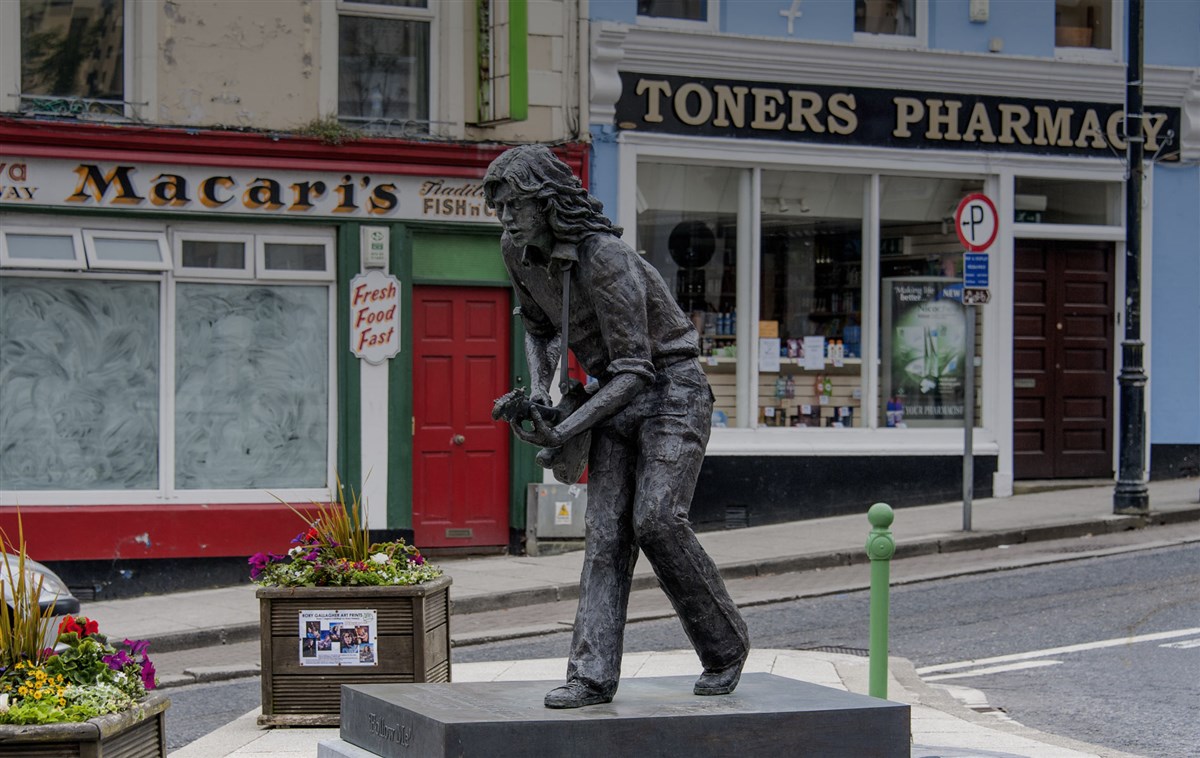
Albums
Taste
Taste (1969)
On the Boards (1970)
Live Taste (1971)
Live at the Isle of Wight (1971)
Taste First (1972)
(recorded in 1967; released in 1974 as In the Beginning
and again in 1976 as Take It Easy Baby)
Solo
Rory Gallagher (1971)
Deuce (1971)
Live in Europe (1972)
Blueprint (1973)
Tattoo (1973)
Irish Tour '74 (1974)
Against the Grain (1975)
Calling Card (1976)
Photo-Finish (1978)
Top Priority (1979)
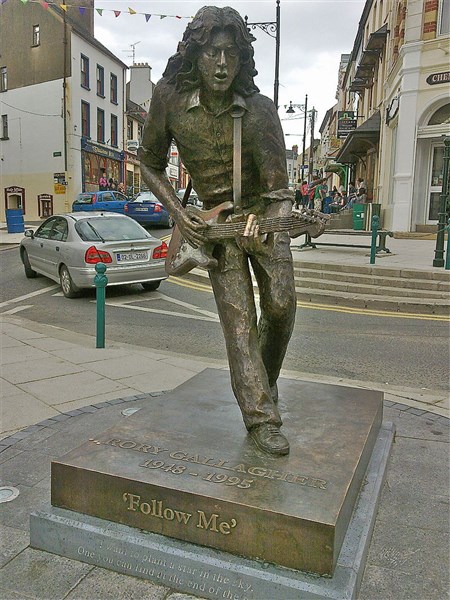
Members
Rory Gallagher (guitar, vocals)
Gerry McAvoy bass (1971-1991)
Wilgar Campbell Drums (1971-1972
Lou Martin Keyboards (1972-1978)
Rod de'Ath Drums (1972-1978)
Ted McKenna drums (1978-1981)
Brendan O'Neill drums (1981-1991)
David Levy bass (1992-1994)
Jim Leverton keyboards (1992-1994)
Richard Newman drums (1992-1994)
Mark Feltham harmonica (1981-1994)
John Cooke keyboards (1992-1994)
Posthumous albums
Meeting with the G-Man (2003) live
Live at Montreux (2006)
Notes from San Francisco – 2011 (double-album of unreleased recordings from 1977 and live performances in San Francisco from 1979)
All Around Man: Live in London (2023)
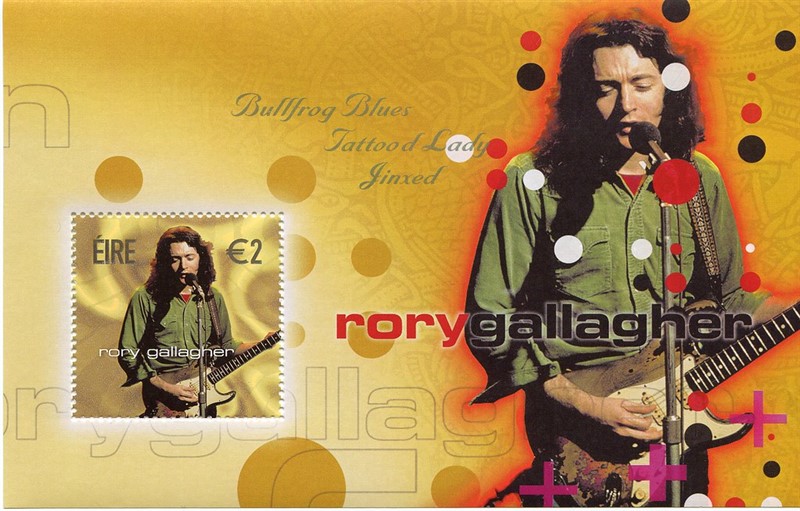
Current Taste members
Sam Davidson – guitars, vocals (1996–present)
Albert Mills – bass (2010–2017, 2018–present)
Lyn McMullan – drums (2018–present)
-
Former Taste members
Rory Gallagher – guitars, vocals, saxophone, harmonica (1966–1970; died 1995)
Norman Damery – drums (1966–1968; died 2023)
John Wilson – drums (1968–1970, 1996–2018)
Eric Kitteringham – bass (1966–1968; died 2013)
Richard McCracken – bass (1968–1970, 1996–2010)
Alan Niblock – bass (2017–2018)
Source: Wikipedia

